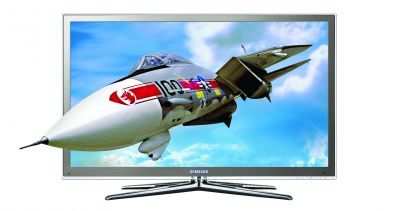Telecommunications Union working on 3D TV to 'mimic real-life visual experience'

Your support helps us to tell the story
From reproductive rights to climate change to Big Tech, The Independent is on the ground when the story is developing. Whether it's investigating the financials of Elon Musk's pro-Trump PAC or producing our latest documentary, 'The A Word', which shines a light on the American women fighting for reproductive rights, we know how important it is to parse out the facts from the messaging.
At such a critical moment in US history, we need reporters on the ground. Your donation allows us to keep sending journalists to speak to both sides of the story.
The Independent is trusted by Americans across the entire political spectrum. And unlike many other quality news outlets, we choose not to lock Americans out of our reporting and analysis with paywalls. We believe quality journalism should be available to everyone, paid for by those who can afford it.
Your support makes all the difference.The International Telecommunication Union (ITU) is hard at work developing new broadcasting systems that will change the way consumers experience their favorite TV programs. ITU hopes to transform TV series and feature films into stereoscopic 3D that will replicate the way in which we naturally perceive our physical surroundings -- adaptively changing to reflect our viewing position and distance related to objects.
The International Telecommunication Union (ITU) is hard at work developing new broadcasting systems that will change the way consumers experience their favorite TV programs. ITU hopes to transform TV series and feature films into stereoscopic 3D that will replicate the way in which we naturally perceive our physical surroundings - adaptively changing to reflect our viewing position and distance related to objects.
On January 14 ITU announced its plans to map out 3D TV implementation in a three-step process.
The initial step would see 3D television delivered to consumer's screens in "plano-stereoscopic" (two different views that merge to provide 3D images when viewers wear 3D glasses). This first generation 3D TV will enable consumers to view images in 3D relief, but the view will not change if they relocate or move their head to a different position in front of the screen.
The second phase integration would "provide for multiple views, with head movement changing the view, for a viewing experience that more closely mimics real life."
In 15 to 20 years time ITU envisages advanced technology will be ready to provide consumers with systems that are capable of near exact replications of human' natural vision and perception of 3D.
"This new ITU report establishes a clear framework for the development of new types of systems that will totally change the way we experience broadcast and multimedia content," said Valery Timofeev, director of ITU's Radiocommunication Bureau. "It maps out an exciting vision that won't just change the look of entertainment, but open up a whole range of exciting new possibilities in sectors from education and healthcare to traffic management."
ITU joins major consumer electronics manufacturers Sony, Panasonic, LG and Samsung in their push for consumer-ready TV. Meanwhile ESPN, Discovery Communications, IMAX and Sony are readying a dedicated 24/7 3D TV station in the USA.
Join our commenting forum
Join thought-provoking conversations, follow other Independent readers and see their replies
Comments